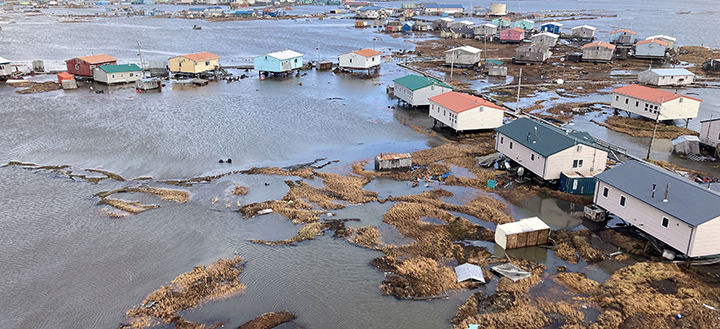As we celebrate Earth Day 2024, Tidal Basin Group reaffirms our commitment to sustainability and climate resilience. Our mission transcends providing leading disaster recovery and emergency management services linked to fostering a sustainable future that can withstand and adapt to environmental challenges.
Climate change poses unprecedented risks, and our work in disaster preparedness and disaster recovery places us at the forefront of building resilience. From assessing vulnerabilities to implementing recovery plans, our holistic approach ensures that sustainability principles are integrated at every step.
This Earth Day, we are proud to spotlight our initiatives that contribute directly to environmental sustainability. Our projects restore communities and enhance their ability to manage future ecological impacts. We leverage cutting-edge technology and data-driven strategies to ensure that our solutions are practical and environmentally responsible.
As part of our commitment, Tidal Basin Group continuously seeks to improve our operational sustainability. We are enhancing our internal practices to reduce waste, conserve energy, and minimize our carbon footprint. Every decision we make today is done with an eye toward a greener tomorrow.
In partnership with local communities, governments, and businesses, we are dedicated to developing strategies that promote environmental stewardship while advancing our resilience efforts. We invite our clients, partners, and stakeholders to join us in this vital cause. Together, we can create a more sustainable and resilient world.
Tom Lewis, who served as President and COO of Tidal Basin, also raised awareness by publishing an op-ed in the Sarasota Herald-Tribune. The op-ed highlighted the importance of nature-based solutions and integrating resilience into our approach to climate adaptability. Read Tom’s op-ed below.
On Earth Day and every day, Tidal Basin Group stands ready to lead the way toward a more sustainable and resilient future.
“As we recognize Earth Day 2024, we must acknowledge that we face ecological and extreme weather challenges caused by pollution, waste, unbridled development, and greenhouse gas emissions not seen in the last 3 million years.
In Sarasota and worldwide, we must reexamine and transition current conventional infrastructure building practices and investments to increase resilience and sustainability. Nature-based solutions are integral to developing more resilient, sustainable infrastructure that embraces a holistic natural approach – throughout the planning, design, construction and long-term operations and maintenance life cycle.
As a local resident, I’m proud our community is a leader in these efforts. The work of nonprofit organizations like the Sarasota-based Climate Adaptation Center, with its grassroots approach to climate adaptation, alongside the International Coalition for Sustainable Infrastructure’s top-down strategy, illustrates the vital, multifaceted impact of nature-based solutions. Both methods are indispensable, serving as complementary forces in the fight against climate change and in building resilience.
By tapping into the power of nature, cities like Sarasota can lead the fight to confront climate change, bolster biodiversity and improve human well-being and enjoyment. The benefits extend beyond environmental health to include air and water purification, urban heat reduction and the provision of recreational and ecological engagement spaces. Natural solutions profoundly impact our physical and mental health and connect us better to our environment and each other.
Natural elements like near-shore oyster reefs, native coastal vegetation and inland wetlands are emerging as effective and, in some cases, superior long-term alternatives to traditional structure-based approaches for addressing environmental and extreme weather protection challenges. Solutions like the storm surge-absorbing mangroves of Florida and the flood-mitigating urban green spaces in California highlight the potential of leveraging nature to enhance water absorption and reduce coastal erosion.
Adopting more resilient and sustainable infrastructure can also bolster the fight against urban groundwater issues such as contamination, over-extraction and saltwater intrusion. This includes integrating advanced wastewater treatment systems, sustainable urban drainage systems and green infrastructure elements like permeable pavements, rain gardens, and green roofs. Using these types of storm and wastewater infrastructure systems improves groundwater recharge and quality, underscoring the viability of sustainable approaches to urban planning.
It is essential to consider how we integrate nature based solutions into emergency management practices -specifically pre-disaster planning and hazard mitigation efforts – and help communities become more resilient and better equipped to face the challenges of a changing climate. Highlighting the importance of the Federal Emergency Management Agency (FEMA) and U.S. Department of Housing and Urban Development (HUD) resilience and recovery grants is crucial for mitigating risks from droughts, wildfires and floods.
These initiatives, including FEMA’s Flood Mitigation Assistance (FMA) program, Building Resilient Infrastructure and Communities (BRIC) program and the Safeguarding Tomorrow Through Ongoing Risk Mitigation (STORM) Act, provide critical funding and support. The FMA program, with $3.5 billion allocated over five years, and the BRIC program’s $1 billion investment to date underscore FEMA’s commitment to resilience.
This Earth Day, integrating nature-based solutions into emergency management, supporting FEMA’s and HUD’s grant programs and embracing other constructive approaches are key steps toward developing resilient communities, fostering a sustainable future and producing a healthier planet.”



